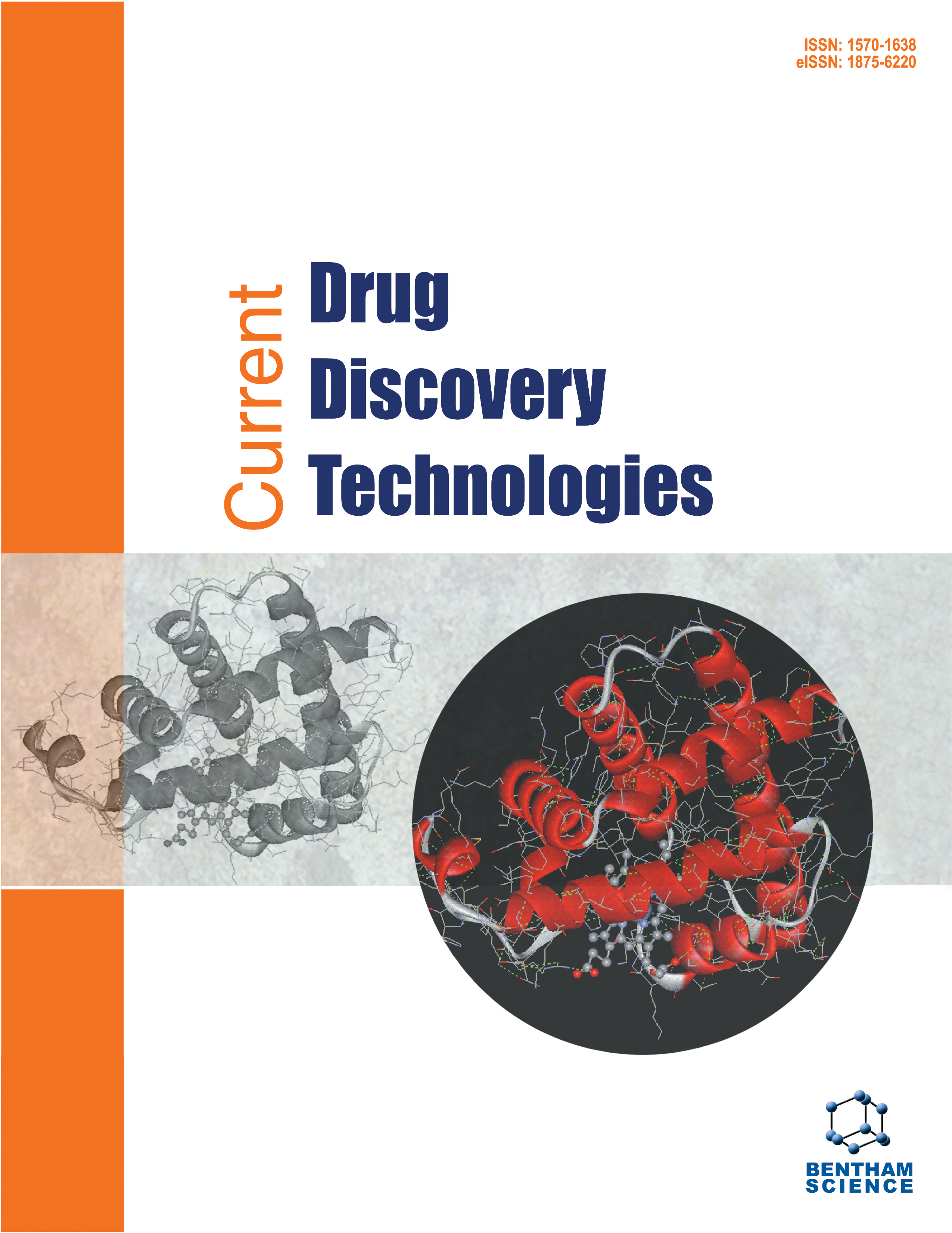- Home
- A-Z Publications
- Current Drug Discovery Technologies
- Previous Issues
- Volume 19, Issue 2, 2022
Current Drug Discovery Technologies - Volume 19, Issue 2, 2022
Volume 19, Issue 2, 2022
-
-
Fatty Acid Biosynthesis: An Updated Review on KAS Inhibitors
More LessAuthors: Rani Shinde and Vasanti SuvarnaSince the early twentieth century, with the isolation of penicillin and streptomycin in the 1940s, the modern era of anti-infective drug development has gained momentum. Due to the enormous success of early drug discovery, many infectious diseases were successfully prevented and eradicated. However, this initial hope was wrongheaded, and pathogens evolved as a significant threat to human health. Drug resistanc Read More
-
-
-
Edible Medicinal Plants on Facilitating Childbirth: A Systematic Review
More LessBackground: Despite advances and the availability of newer drugs to facilitate childbirth, the interest in using natural treatments is on the rise. More than 20 percent of pregnancies require induction of labor, which is associated with side effects and increased risk of cesarean surgery. For this reason, the use of medicinal plants is considered healthier. Objective: The present study is a systematic review of the role of oral herbs i Read More
-
-
-
Evaluation of the Antidepressant-like Effect of Total Sterols Fraction and Stigmasterol Isolated from Leaves of Aegle marmelos and Possible Mechanism( s) of Action Involved
More LessAuthors: Sourav Ghosh, Arvind Kumar, Neetu Sachan and Phool ChandraBackground: Aegle marmelos Corr. (Rutaceae) commonly known as ‘Indian Bael’ has been used as a brain tonic traditionally. However, despite this traditional use, not enough scientific report is present that can confirm the use of this plant in neurological disorders. Thus, the total sterols fraction and stigmasterol from the leaves of Aegle marmelos were investigated for antidepressant-like effect along with their possible mechanis Read More
-
-
-
Structure-based De Novo Design and Docking Studies of 5(S)-Methyl-LProline Containing Peptidomimetic Compounds as Dipeptidyl Peptidase-4 Inhibitors
More LessAuthors: Anuradha K. Gajjar and Chirag D. PathakBackground: Diabetes affects millions of people worldwide, with predicted numbers of about 700 million adults affected by 2045. Among the several anti-diabetic drug therapies available in the market, Dipeptidyl Peptidase-4 (DPP-4) inhibitors have emerged as a promising therapeutic approach with scope for exploration in the segment of peptidomimetics. Objective: Series of proline-containing peptidomimetic compounds were Read More
-
-
-
vHTS, 3-D Pharmacophore, QSAR and Molecular Docking Studies for the Identification of Phyto-derived ATP-Competitive Inhibitors of the BCR-ABL Kinase Domain
More LessBackground: Chronic myelogenous leukaemia (CML) constitutes about 15 % of adult leukaemia and is characterized by the overproduction of immature myeloid cells. Methods: In this study, a virtual high throughput screening (vHTS) technique was employed to screen a library of phytochemicals of reported plants having anticancer activity. A docking score of -10 kcalmol-1 was used as the cut-off for the selection Read More
-
-
-
Extracting Atomic Contributions to Binding Free Energy Using Molecular Dynamics Simulations with Mixed Solvents (MDmix)
More LessAuthors: Daniel Alvarez-Garcia, Peter Schmidtke, Elena Cubero and Xavier BarrilBackground: Mixed solvents MD (MDmix) simulations have proved to be a useful and increasingly accepted technique with several applications in structure-based drug discovery. One of the assumptions behind the methodology is the transferability of free energy values from the simulated cosolvent molecules to larger drug-like molecules. However, the binding free energy maps (ΔGbind) calculated for the different moieties Read More
-
-
-
Cytotoxic Effects of Garcinia mangostana Pericarp Extract on Cancer Cell Lines
More LessBackground:Garcinia mangostana, commonly also called mangosteen, is an evergreen tropical tree, and its pericarps have been used in traditional herbal medicine for different diseases. The anticancer efficacy of the ethanolic extract from the pericarps of Garcinia mangostana was investigated in human prostate cancer cells (PC3), melanoma cells (B16F10), breast cancer cells (MCF7), and glioblastoma (U87) cell lines. Methods: Read More
-
Volumes & issues
-
Volume 22 (2025)
-
Volume 21 (2024)
-
Volume 20 (2023)
-
Volume 19 (2022)
-
Volume 18 (2021)
-
Volume 17 (2020)
-
Volume 16 (2019)
-
Volume 15 (2018)
-
Volume 14 (2017)
-
Volume 13 (2016)
-
Volume 12 (2015)
-
Volume 11 (2014)
-
Volume 10 (2013)
-
Volume 9 (2012)
-
Volume 8 (2011)
-
Volume 7 (2010)
-
Volume 6 (2009)
-
Volume 5 (2008)
-
Volume 4 (2007)
-
Volume 3 (2006)
-
Volume 2 (2005)
-
Volume 1 (2004)
Most Read This Month
Article
content/journals/cddt
Journal
10
5
false
en


